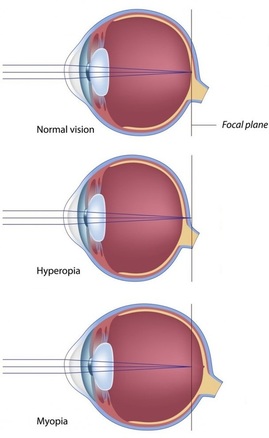|
Can correcting these common eye problems help in my child's visual skills towards learning?
By correcting these common eye problems, we are only improving how clear your child sees, making it clearer to see far (20/20 or 6/6) or near. Improving their eyesight is 1 part of many other visual skills necessary for learning to potential. See Visual Skills for Learning. Common Eye Problems Prevalent vision problems commonly known as nearsightedness (myopia), farsightedness (hyperopia), and astigmatism occur when the shape of the eye or the cornea prevents light from focusing directly on the retina. Nearsightedness (myopia) Objects up close appear clearly, while objects far away appear blurry. With nearsightedness, light focus in front of the retina instead of on the retina. Farsightedness (hyperopia) Distant objects are seen clearer than objects that are near. However, people experience farsightedness differently as it is dependant on the amount of farsightedness. Some people may not notice any problems with their vision, especially when they are young. For someone with significant farsightedness, vision can be blurry for objects at any distance, near or far. Astigmatism is a condition in which the eye does not focus light evenly onto the retina, the light-sensitive tissue at the back of the eye. This can cause images to appear blurry and stretched out. |
|
Midpoint Orchard 220 Orchard Road #03-05, S238852 Contact: 9641 2430 |
Practice Locations
Upper Bukit Timah 64 Eng Kong Road S599057 Contact : 9641 2430 (Appointment only. Facility in ELF Preschool) |
Indonesia Jakarta Rukan Taman Meruya Blk N No. 38, Meruya Utara, Kembangan, Jakarta Barat (Appointment only) |

